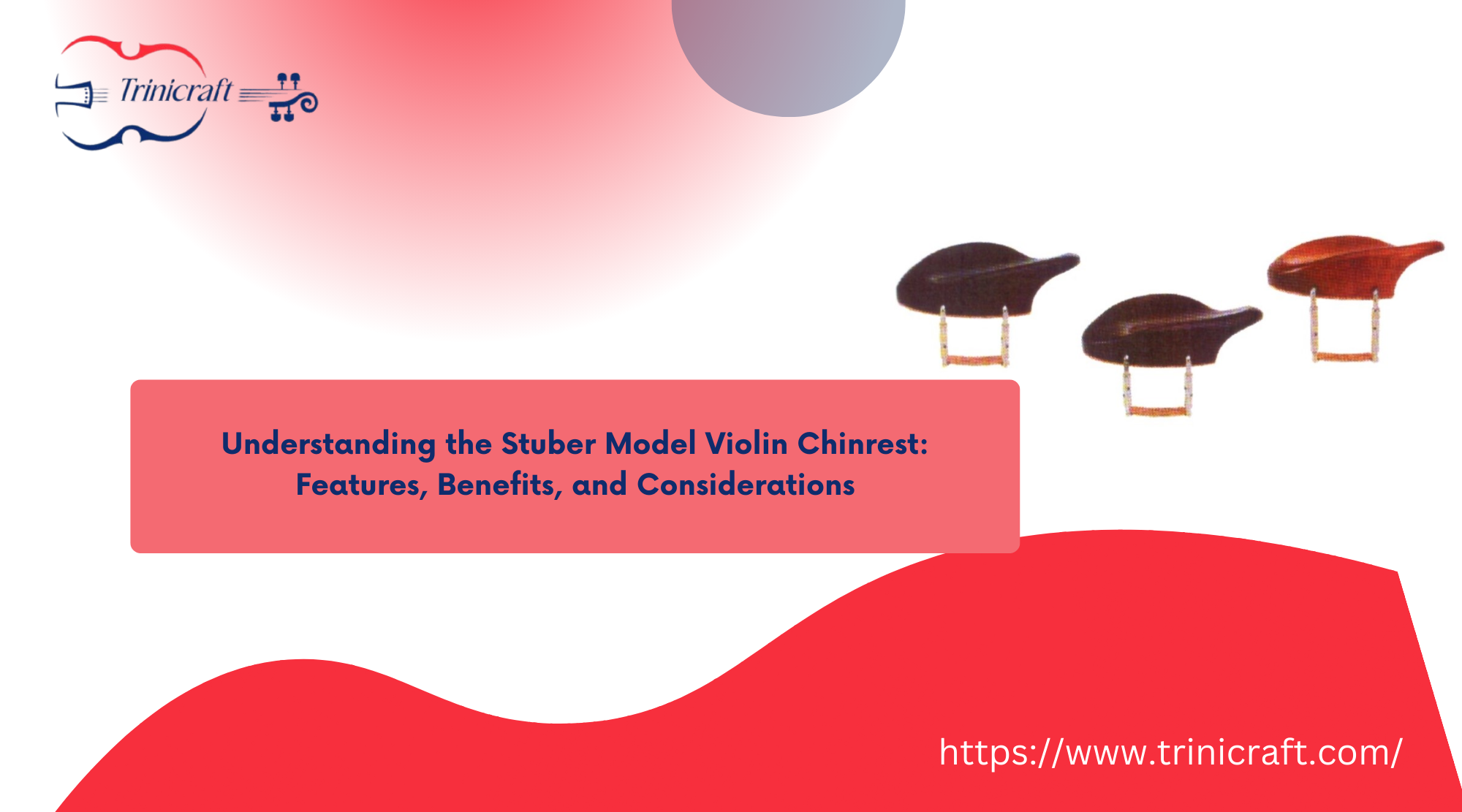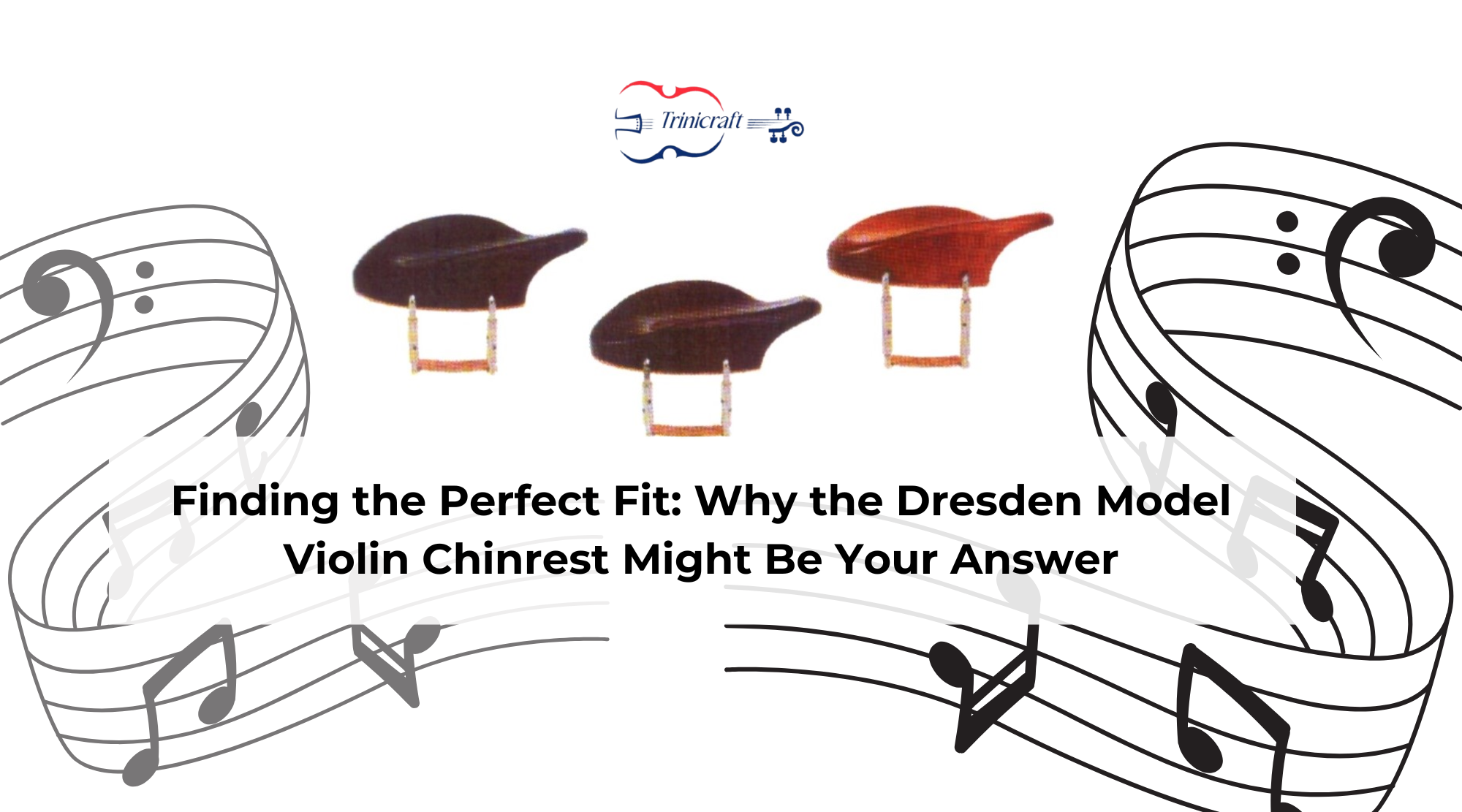If you’re a violinist, you know that comfort and technique are crucial for optimal performance. One often-overlooked element that contributes to both aspects is the chinrest. Among various options available, the Stuber model violin chinrest has gained popularity for its design and functionality. In this blog, we’ll explore the features, benefits, and considerations of the Stuber model chinrest, helping you decide if it’s the right fit for you.
Features of the Stuber Model Chinrest
The Stuber model violin chinrest is distinctive for several reasons. Firstly, its design is crafted to accommodate the natural contour of the player’s jaw, allowing for a more ergonomic grip. This ergonomic shape reduces strain during long practice sessions or performances, making it an appealing choice for both beginners and seasoned players.
Made from high-quality materials, the Stuber chinrest promises durability and resilience. It is typically constructed from solid wood, giving it a classic aesthetic that complements the traditional look of the violin. Additionally, many versions come with a smooth finish, ensuring that players experience minimal friction as they move their chin.
Another feature worth noting is the height adjustment mechanism. The Stuber chinrest often includes various mounting options that allow the player to adjust the height according to personal preference. This adaptability ensures that players of different neck lengths and playing styles can find a comfortable position that enhances their overall playing experience.

Benefits of Using the Stuber Model Chinrest
One of the primary benefits of the Stuber model is its contribution to playing posture. Many violinists struggle with maintaining an open and relaxed position, especially during extended sessions. The Stuber chinrest helps alleviate tension by supporting the jaw in a natural position, preventing the need for players to over-twist or strain their neck.
Moreover, comfort translates to better performance. When you’re able to focus on your music without being distracted by discomfort or awkward positioning, you can achieve greater musical expression. For many players, this chinrest has made a noticeable difference in their ability to play more freely and expressively.
The Stuber model chinrest is also compatible with a variety of violins, making it a versatile choice for players who might switch instruments. This seamless adaptability is particularly beneficial for students who may upgrade their violins over time while still retaining the comfort and support of a familiar chinrest.
Considerations When Choosing the Stuber Model Chinrest
While the Stuber model offers many advantages, it’s essential to consider a few aspects before making a purchase. First and foremost, it’s crucial to ensure that the chinrest aligns with your specific needs and preferences. Everyone’s anatomy is different, and what works for one player may not work for another.
Before purchasing, trying out the chinrest is highly recommended, if possible. Visiting a local music store that stocks the Stuber model can allow you to test its fit and feel. Additionally, consulting with your violin teacher or a professional violinist can provide valuable insights into whether this chinrest suits your playing style.
Additionally, while the Stuber chinrest is known for its comfort, some players may prefer a different style due to aesthetic preferences or personal playing habits. For instance, those who favor a flatter chinrest style might find the Stuber model less appealing, so weighing your options carefully is vital.
Conclusion
Choosing the right chinrest is an important decision for any violinist, greatly affecting comfort, posture, and overall performance. The Stuber model violin chinrest stands out due to its ergonomic design, quality construction, and adjustability, making it a worthy option for many players. By understanding the features, benefits, and considerations associated with this chinrest, you can make an informed choice that enhances your playing experience. Happy playing!

